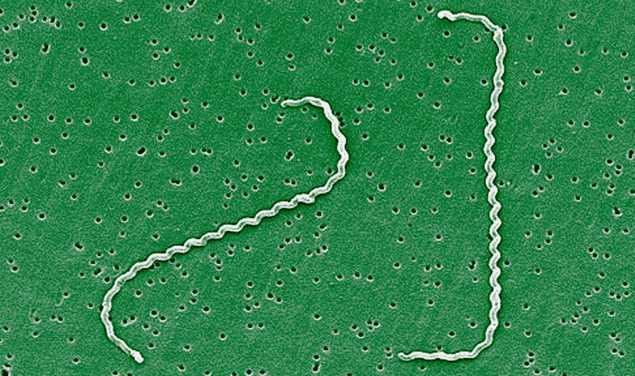
A number of microorganisms have a talent for viscotaxis – movement through fluids to areas of thicker consistency (or higher viscosity). Now, Benno Liebchen and colleagues at the Heinrich-Heine-Universität Düsseldorf in Germany and the University of Twente in the Netherlands have proposed a mechanism for how these tiny swimmers navigate up the viscosity gradient. The team’s computer simulations and theoretical calculations show that viscotaxis is a purely physical mechanism driven by specific types of body shape. The research could lead to the design of robotic viscotactic swimmers that deliver drugs to regions of high viscosity in the body.
Sperm and bacteria are among many types of biological micro-swimmers that alter their motion in response to changes in their surroundings. Some bacteria, for example, will move in the direction of increasing concentration of chemical signals produced by food – a process called chemotaxis. Viscous fluids like mucus also stimulate motion in certain microorganisms. For bacteria such as Spiroplasma and Leptospira interrogans, the ability to navigate towards more viscous regions is useful because they are poor swimmers in low-viscosity fluids. Biologists had speculated that viscotaxis could be a receptor driven mechanism similar to chemotaxis, but visco-receptors have never been found and no systematic theory or mechanism of viscotaxis existed.
Writing in Physical Review Letters, Liebchen and colleagues describe how they created a framework to study viscotaxis of micro-swimmers in slowly varying viscosity fields. Initially the team used computer simulations to examine viscotaxis of a variety of simple passive particle shapes, and then they turned their attention to mimicking linear micro-swimmers as multi-bead bodies.
Generating viscous torques
The team found that swimmers with uniaxial body shapes that display symmetric rotation around their body axis do not display viscotaxis. But nonuniaxial body shapes, like that seen in Spiroplasma and Leptospira interrogans – which have spiral shapes — display a mismatch of viscous forces acting on different parts of the swimmer. The asymmetry of these forces causes the swimmer to automatically rotate up the viscosity gradient. This viscous torque eventually balances, stabilizing the positive viscotactic movement of the swimmer.
It was also observed that, remarkably, even if nonuniaxial swimmers began a simulation moving in a negative viscotactic direction, they can slow their movement and gradually move in the opposite direction, up the viscosity gradient.
The physicists then developed a general theory of viscotaxis to try and understand the phenomena for more complex body shapes and different swimming modes. Expanding this theory to non-linear swimmers, the calculations showed that negative, as well as positive viscotaxis is possible, depending on body shape and movement type.
Liebchen now plans to work with experimentalists to test their general theory of viscotaxis. In the future he hopes that their findings could also be applied to design synthetic swimmers with negative or positive viscotactic characteristics. This could help refine drug targeting in complex biological systems.



